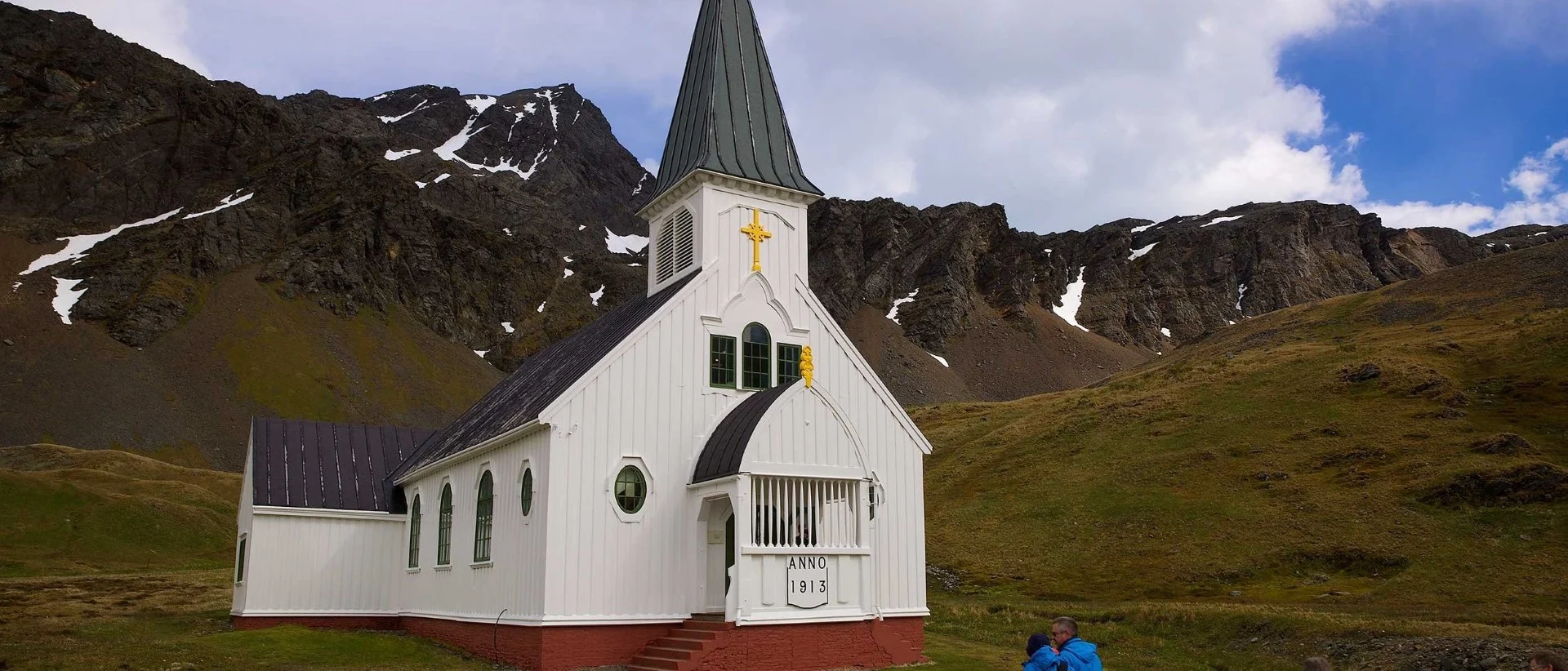Five Things to Do in the South Sandwich Islands
Nestled in the remote Southern Ocean north of mainland Antarctica are South Georgia and the South Sandwich Islands. The islands remain an official British territory and are most famous as polar explorer Ernest Shackleton’s final resting place.
3 mins read
From visiting the king penguin colonies that populate this far-removed archipelago to getting one of the rarest passport stamps in the world, these islands are brimming with things to do. Here are five of our favorites:
1. Gaze at the majestic king penguin
The king penguins that roam South Georgia and the South Sandwich Islands are Antarctica’s iconic symbol and one of the most beloved and spectacular sights for visitors. The penguins stand at an impressive three feet high and can be spotted at most of the bays that pepper this remote archipelago. Although female king penguins only raise two chicks every three years — despite regular breeding — their population continues to thrive.
2. Get your passport stamped
One of the most satisfying aspects of travel is flicking through your passport to reflect on your adventures. When visiting the South Sandwich Islands, be sure to get the official South Georgia stamp. It’s not an official entry pass, but it is an excellent memento for your trip to this faraway part of the world.
3. Retrace the steps of Ernest Shackleton
After setting out from London in 1914, the crews of the Endurance and the Aurora ran into difficulties around South Georgia and the South Sandwich Islands. Explorer Ernest Shackleton and his crew survived for weeks on an ice floe before finally making it to South Georgia, which they traversed on foot and eventually sent out ships to rescue the remaining crew. On a later trip to the islands, Shackleton died of a heart attack. Visitors can now pay respects at his grave in Grytviken.
4. Explore Prion Island
This small island, located a few miles northeast of Luck Point on South Georgia, is famed for being charted by American naturalist Robert Cushman Murphy during 1912–1913. It's the home of the spectacular wandering albatross, and the island is also known for being rat-free, making it an exception among the other islands nearby, which have been plagued by rats ever since whaling ships brought them there centuries ago. The rats pose a threat to the native bird life as they prey on the eggs; luckily, this isn’t an issue on Prion Island.
5. Visit the only church in Antarctica
One of the few markers of human life in South Georgia and the South Sandwich Islands is the Norwegian Lutheran church in Grytviken. This neo-Gothic structure was constructed by whalers, led by explorer Carl Anton Larsen, during 1912–1913. The church was consecrated on Christmas Day in 1913, and its graveyard has sixty-four graves, including that of Ernest Shackleton. The church was also briefly shown in the 2006 animated film Happy Feet, which centers around a group of emperor penguins.
Visiting the South Sandwich Islands is an experience like no other. Witness some of the few man-made structures in Antarctica, discover the area’s wildlife, and soak up the history of famed explorers who visited the area.
